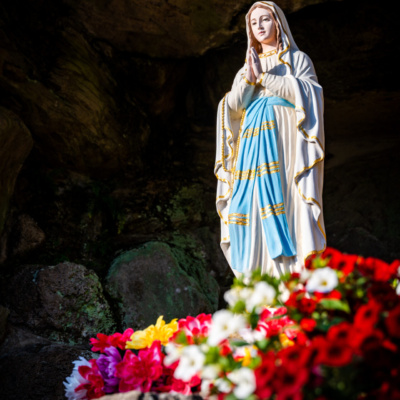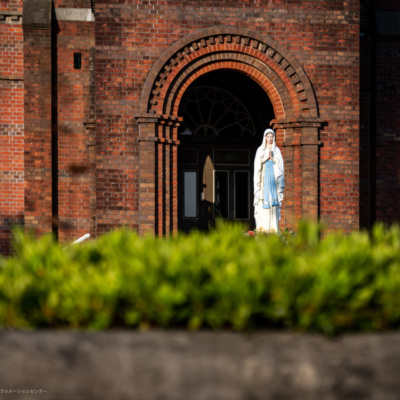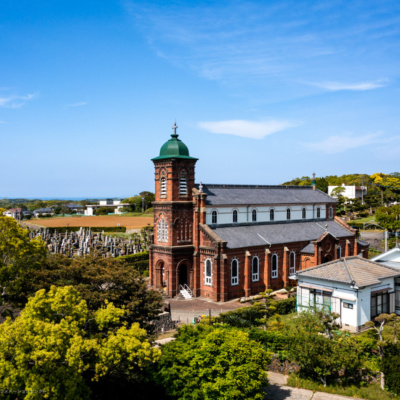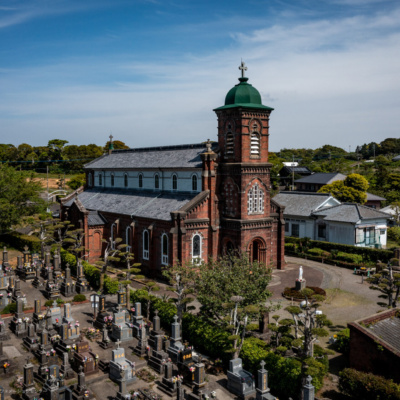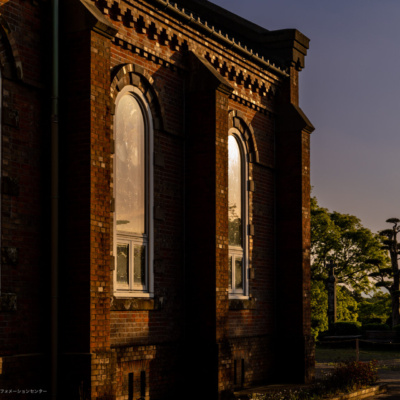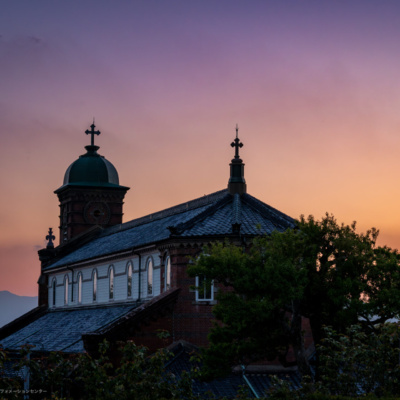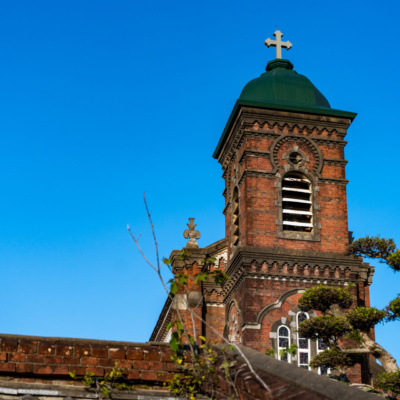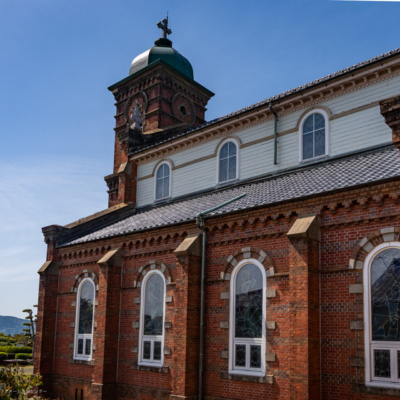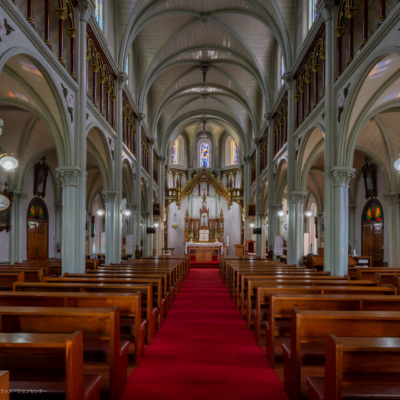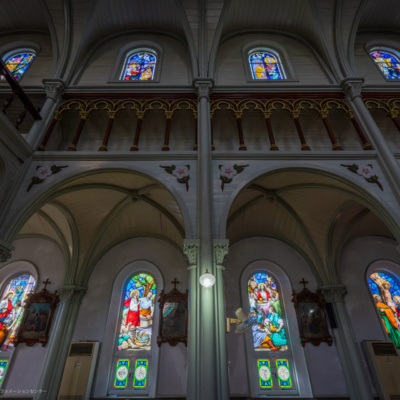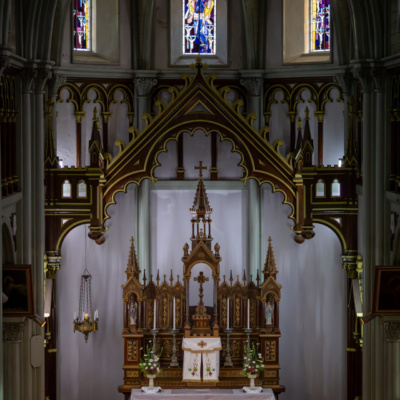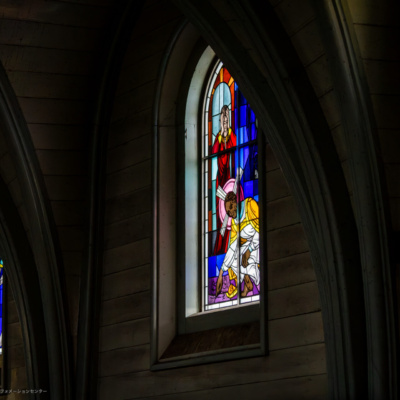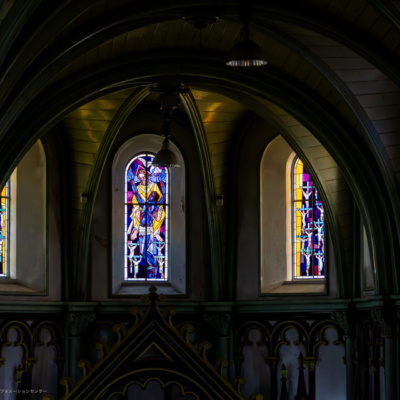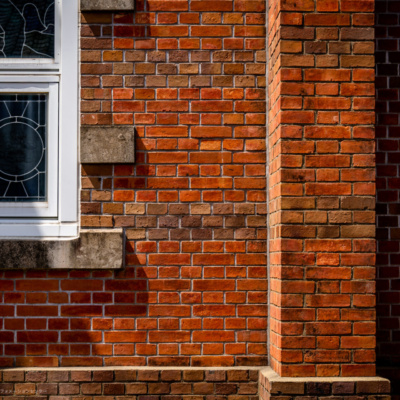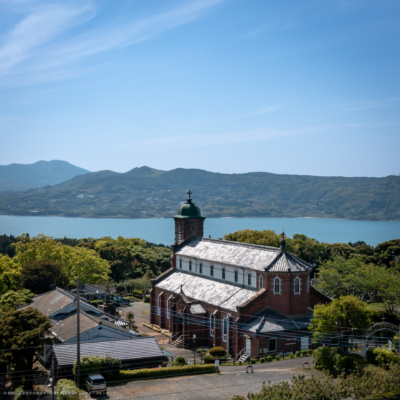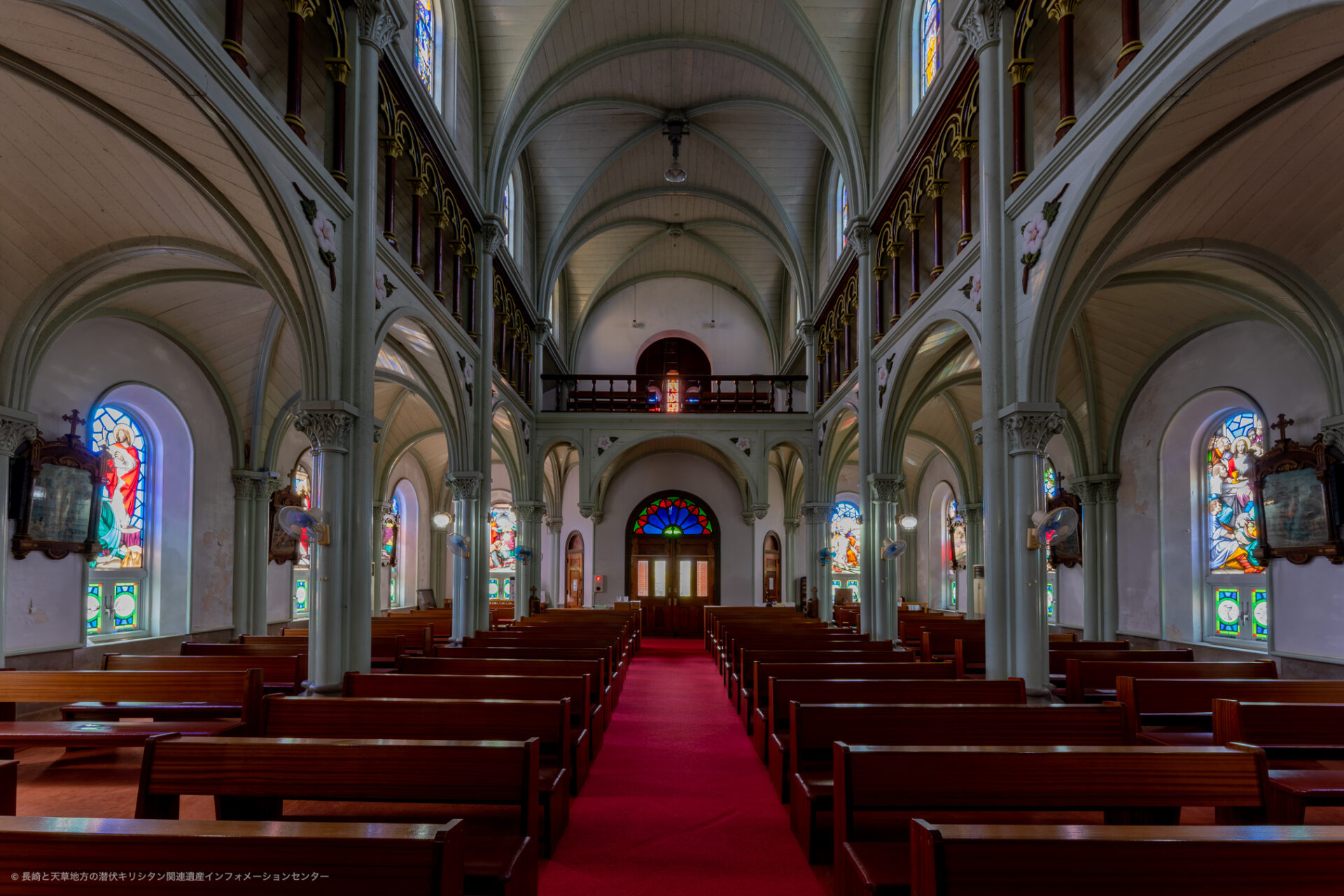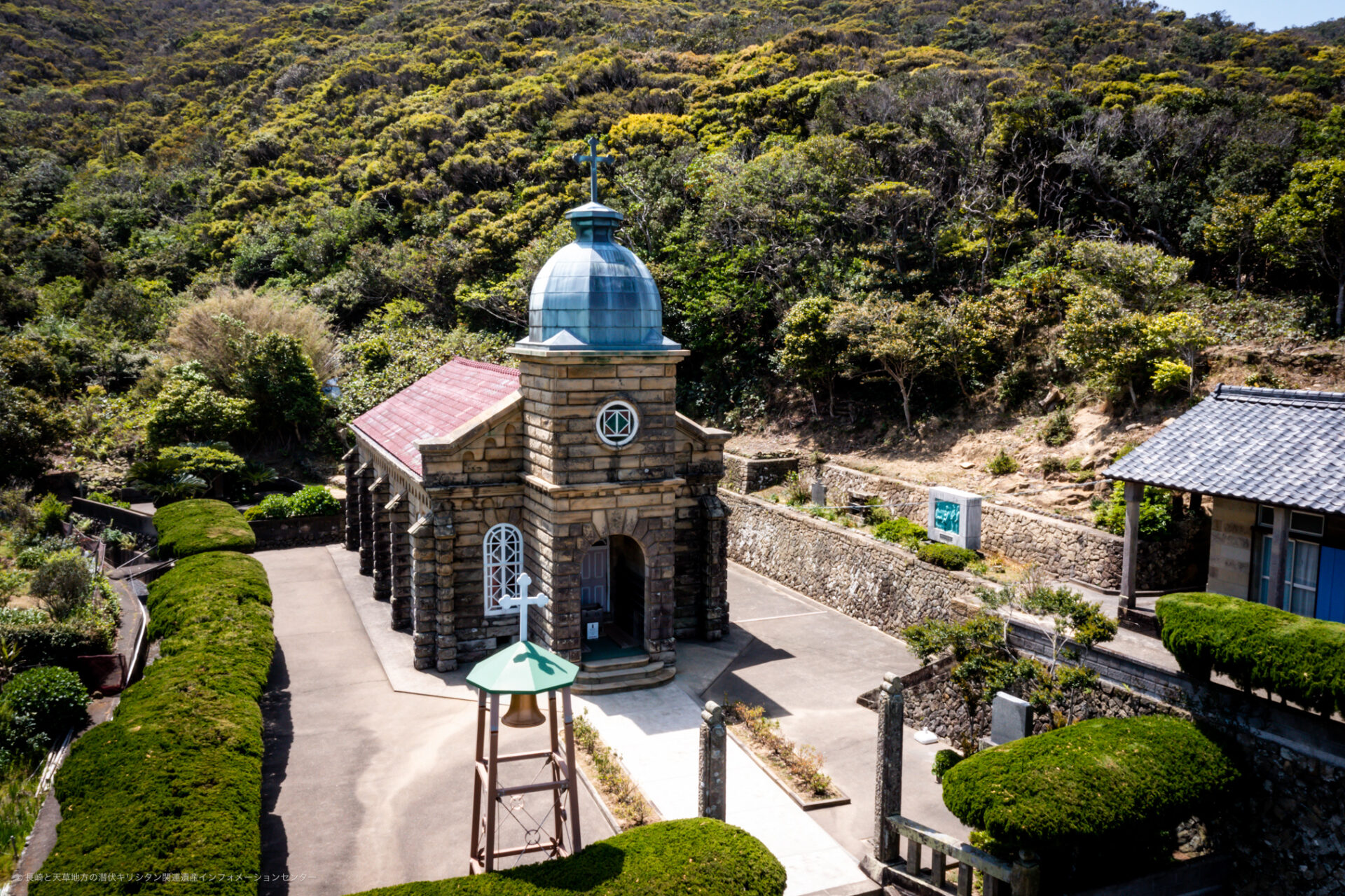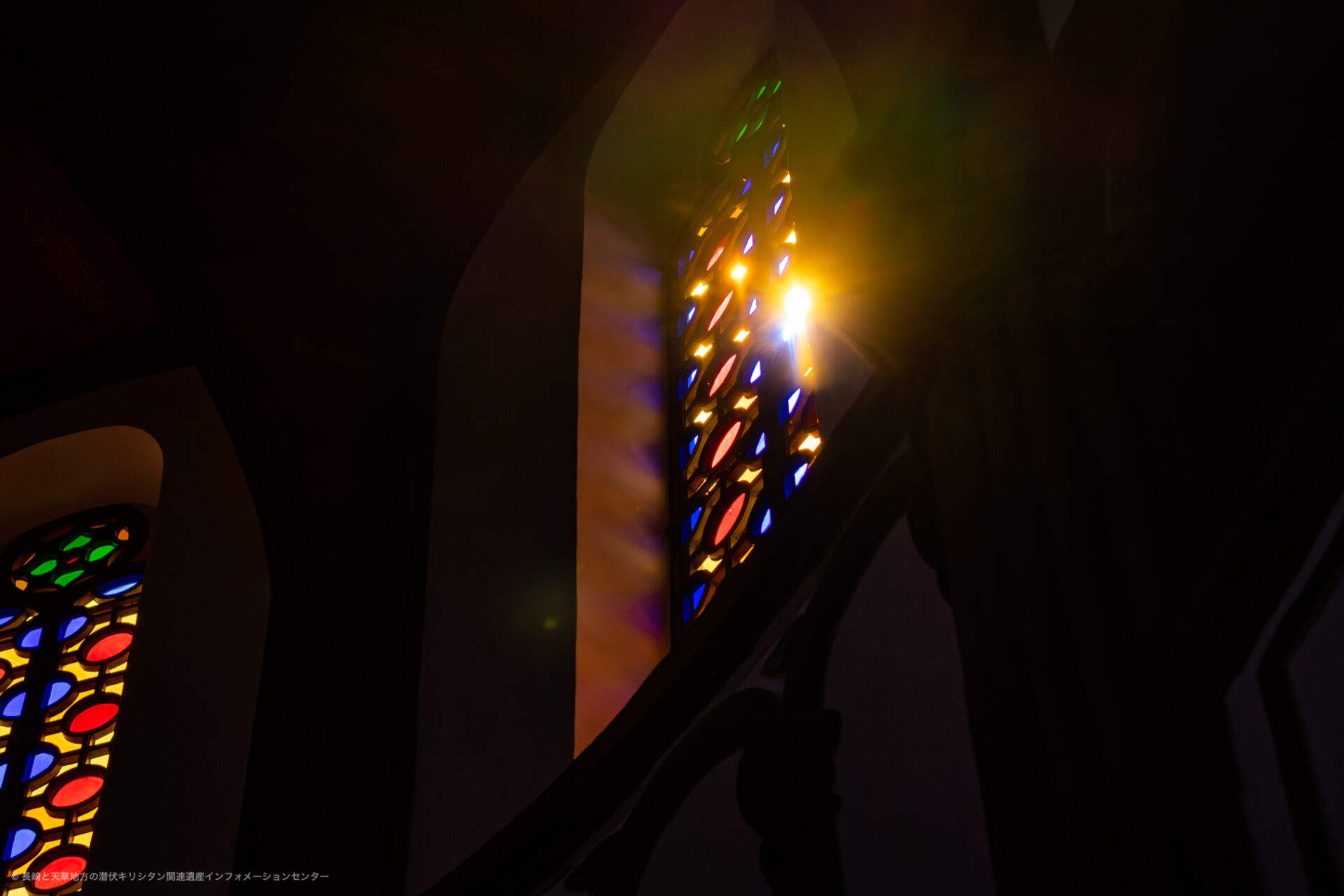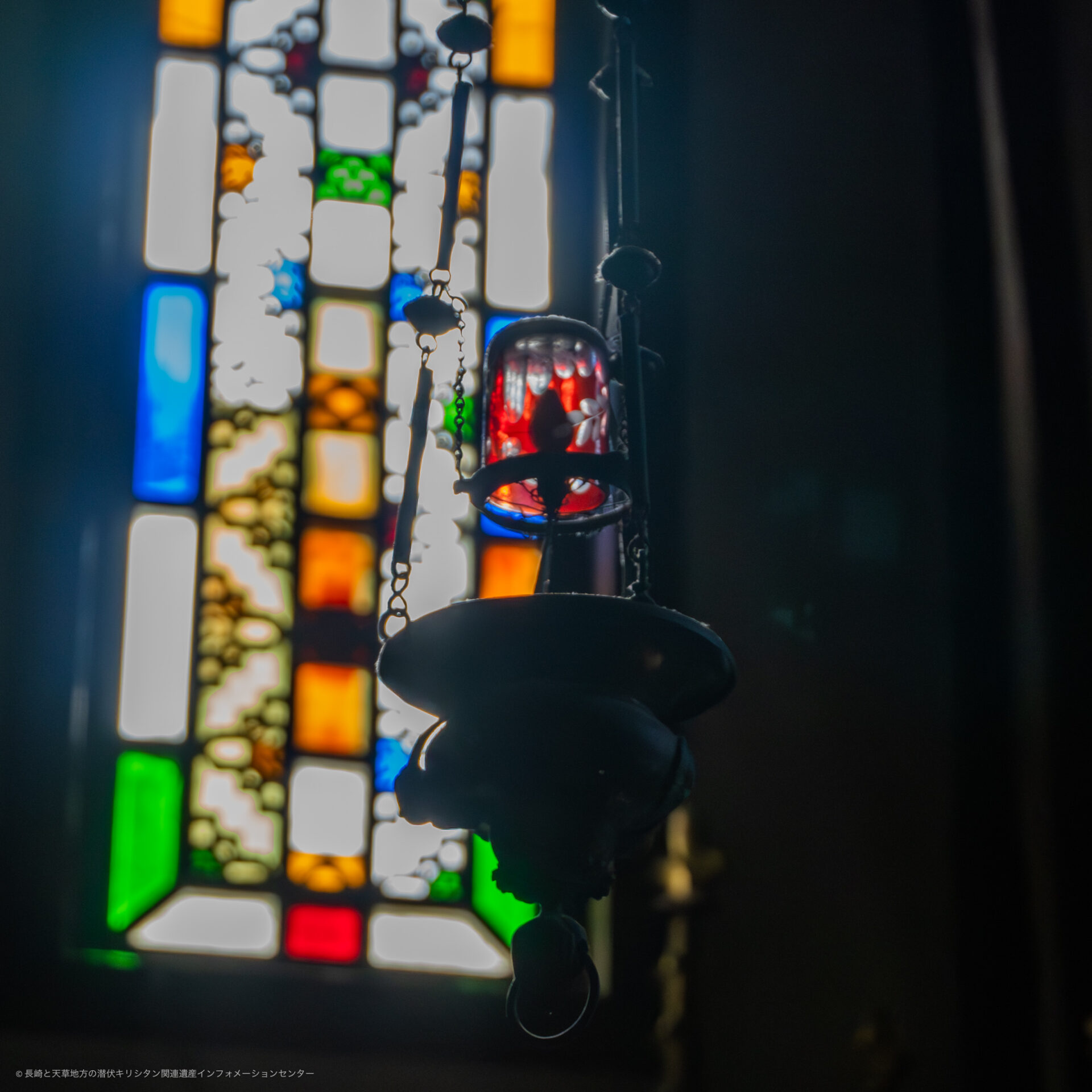Touching history Visiting Churches
Tabira Church (*Non-Component Assets)
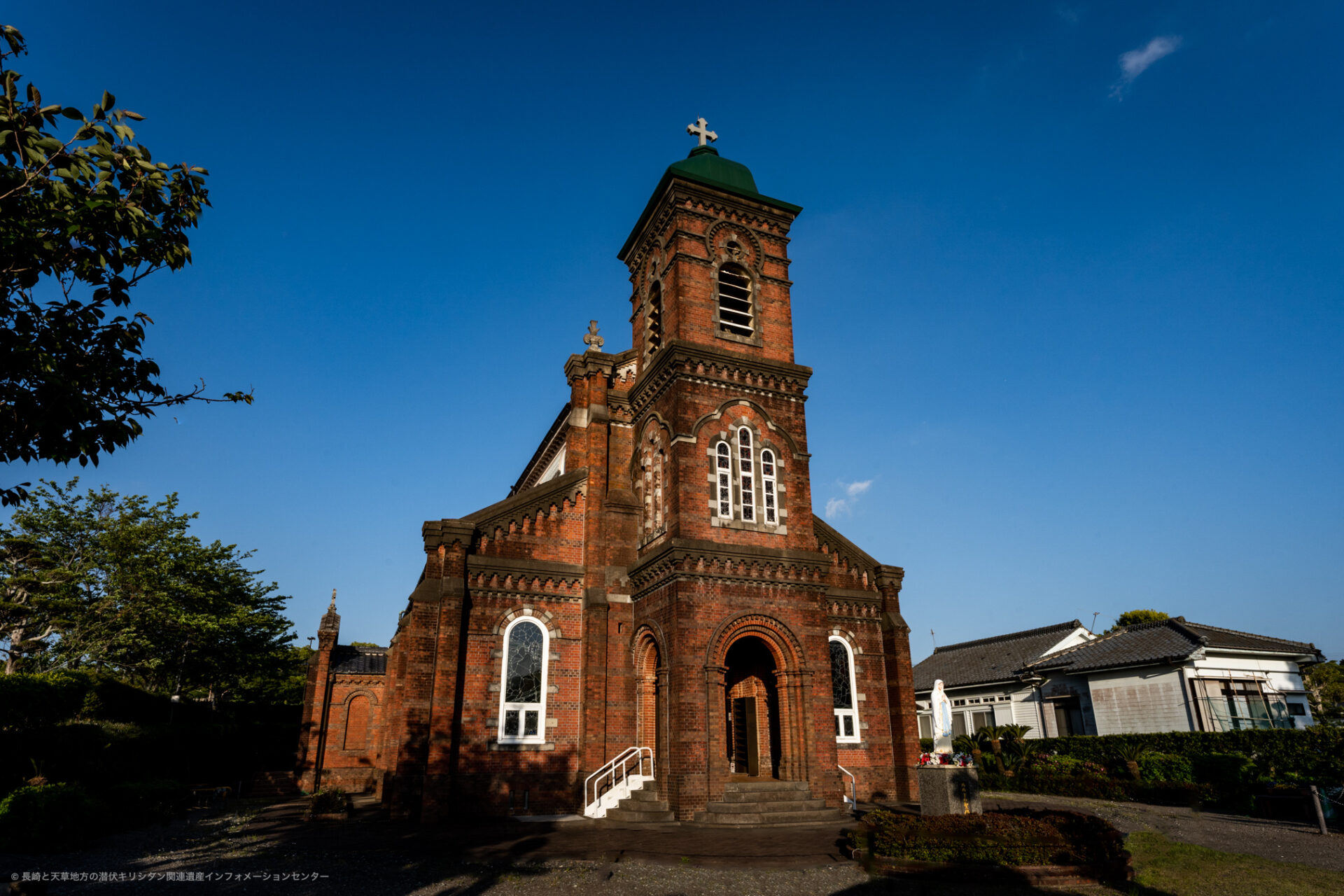
*Although Tabira Church is not a church within the components of World Heritage Sites, as an important cultural property related to the World Heritage List and in view of the large number of visitors, we ask for your cooperation in contacting us in advance of your visit.
Tabira Church (*It is not registered as a World Heritage site.)
For visitors to Tabira Church
Catholic Tahira Church was built in 1918 under the leadership of Father Toukichi Nakata, who arrived in 1914, and designed and built by Yosuke Tetsukawa.
Tahira Church is not registered as a World Heritage site, but it is closely related to the “Nagasaki Region Heritage Related to the Latent Christians,” so please contact us in advance if you wish to visit.
The Tabira Church is a place where Mass and various religious events are held on a daily basis.
A local congregation is stationed at the information center attached to the building and is ready to receive visitors. (during Mass and liturgy times, they may not be allowed in the building)
Cultural assets, etc. included in the constituent assets
| Designation title as cultural assets | Designation category | Designation year |
| Tabira Church | Important Cultural Landscape selected by the national government | 2003 |
History of Christianity in the region.
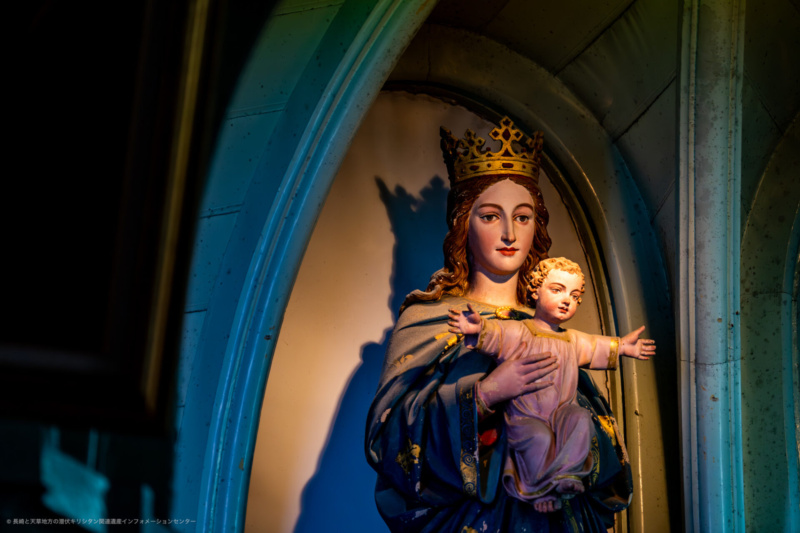
The history of Christianity in the Hirado region can be traced back to 1550.
Francisco de Xavier: (1506-1552), who introduced Christianity to Japan, visited Hirado in 1550 with Cosme de Torres (1510-1570), Juan Fernández (1526?-1567)and Bernardo of Kagoshima, visited Hirado.
After the baptism of Koteda, a chief vassal of Takanobu Matsuura, in 1557, Christianity spread throughout the Hirado area.Christian missionary work in the Tabira area is also thought to have taken place around that time.
After the Christianity ban order, repression became even more severe, and martyrs continued to appear in various parts of Nagasaki.
In Tabira, Father Camillo (Camillus Costanzo:1571-1622), Italian Jesuit priest, was burned at the stake and martyred in 1622.
As the persecution of Christianity became more severe, Christian hiding places were concentrated in Ikitsuki and the western coast of Hirado Island.
History of Tabira Church
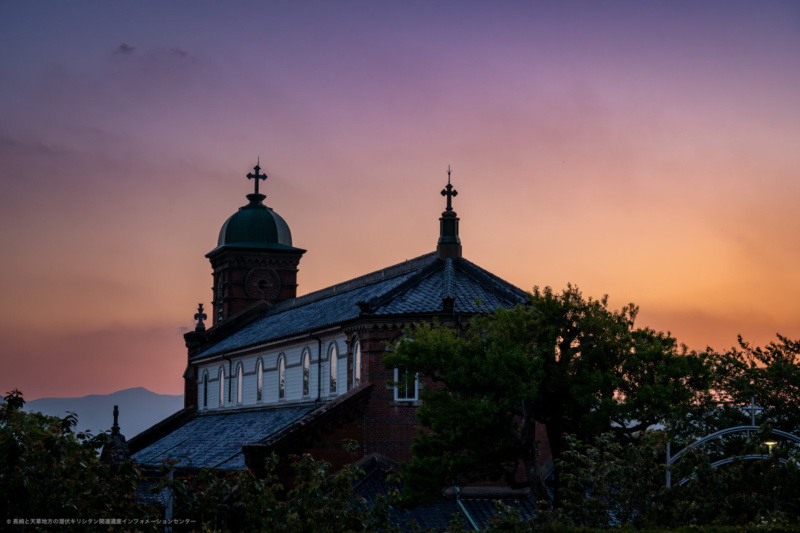
In 1886, Father Emile Raguet (1854 – 1929), the chief priest of Kuroshima, and Father Marc Marie De Rotz (1840-1914), the chief priest of Shitsu, purchased a mountain field in the Yokotatsu area.
Each lot was about one hectare in size, and three or four families migrated to the area. Later, many people from other parts of the country moved into the neighborhood.
In 1899, a site was purchased for the construction of a church, and a temporary church was erected around 1903.
In 1905, Father Takatoshi Kataoka planned the construction of a church, which was taken over by Father Tokichi Nakata, who arrived in 1914, and construction work began in December 1915.
Progress on the construction was delayed considerably due to financial difficulties, and construction was completed in the spring of 1918, with the dedication ceremony held on May 14 of the same year, presided over by Bishop Jean Claude Combaz (1856-1926).
The interior space is three-story structure over 10 meters high with a deep triforium, and the upper and lower windows are fitted with stained a glass.
In 2003, it was designated National Important Cultural Property.
Surroundings and location
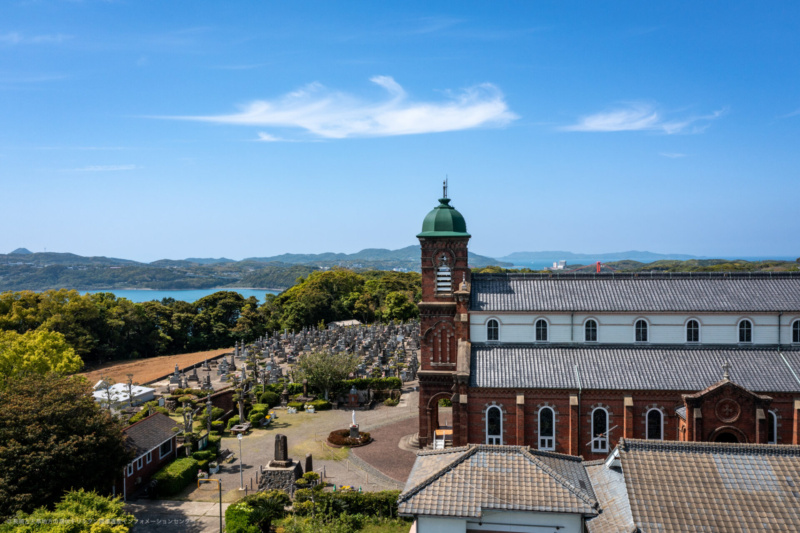
Tabira Church is located at the tip of 100-meter-high plateau overlooking Hiradoseto, about 250 meters from the coast.
Between the beach and Tabira Church is mountains and forests, and behind them are fields along the prefectures road.
The cemetery borders the north side of the church, and to the south is the presbytery and behind it is the congregation hall.
On the west side of the front of the church, the remains of a shell-burning ruins can still be seen, and stone steps lead down to Lourdes from the side gateposts.
The view of the surrounding landscape, including the stone walls built on both sides of the stone steps and the ruins of a shell-making sites, as well as the view of Hirado Seto, is excellent.
Overview
| Prior notice | Prior notice required for both individuals and groups. |
| Address | 19, Kotedamen, Tabira-cho, Hirado City, Nagasaki |
| Masses/religious events | Sunday 8:30~10:30 (*Please click here to check the “No Visitors” date and time other than those listed above.) |
| Visiting Hours | 9:00~12:00/13:00~17:00(Church attendants are stationed there.) |
| Related data | Priority areas for the prevention of littering【PDF file(Approx. 200 KB)】 |
Traffic Access
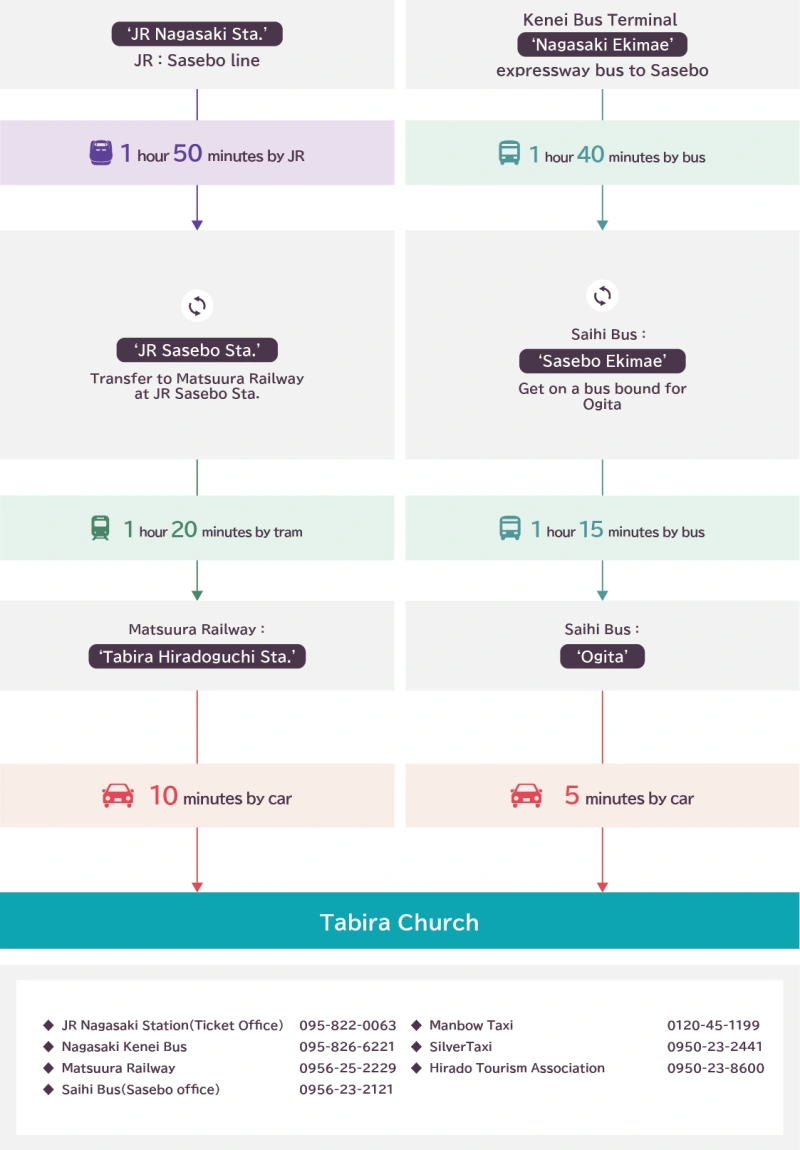
Access Map
Gallery
